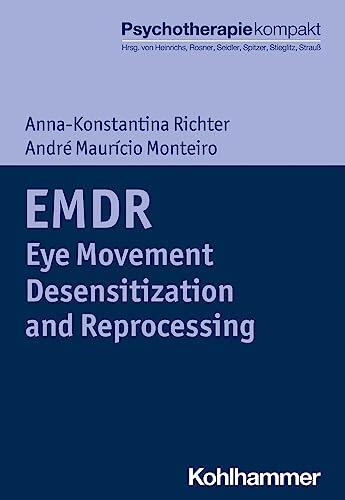
E. M. D. R.: Eye Movement Desensitization and Reprocessing
まだ評価がありません
Horror
形式
ペーパーバック
ページ数
190
言語
ドイツ語
公開されました
Dec 31, 2023
出版社
Kohlhammer Verlag
ISBN-10
3170394681
ISBN-13
9783170394681
説明
In an exploration of a groundbreaking therapeutic approach, the authors delve into the intricacies of Eye Movement Desensitization and Reprocessing. This technique has garnered significant attention in the field of psychotherapy for its efficacy in addressing trauma and distressing memories. The authors, Andre Mauricio Monteiro and Anna-Konstantina Richter, provide a comprehensive overview that illustrates the foundations and practical applications of this method.
The book not only discusses the theoretical underpinnings of EMDR but also offers insights into its practical implementation within clinical settings. It emphasizes the importance of understanding how eye movements can facilitate the processing of traumatic experiences, leading to emotional healing and resolution. The narrative presents both case studies and empirical evidence, showcasing the transformative impact that EMDR can have on individuals grappling with unresolved trauma.
Moreover, the authors emphasize the collaborative nature of this therapeutic technique, highlighting the client-therapist relationship as a cornerstone of successful treatment. They guide practitioners on how to create a safe and supportive environment, which is crucial for clients to engage in the often emotional and challenging process of reprocessing their experiences.
Overall, the book stands as an essential resource for mental health professionals seeking to enhance their understanding and practice of EMDR, offering clarity on its application while grounding it in both research and real-world experiences.
The book not only discusses the theoretical underpinnings of EMDR but also offers insights into its practical implementation within clinical settings. It emphasizes the importance of understanding how eye movements can facilitate the processing of traumatic experiences, leading to emotional healing and resolution. The narrative presents both case studies and empirical evidence, showcasing the transformative impact that EMDR can have on individuals grappling with unresolved trauma.
Moreover, the authors emphasize the collaborative nature of this therapeutic technique, highlighting the client-therapist relationship as a cornerstone of successful treatment. They guide practitioners on how to create a safe and supportive environment, which is crucial for clients to engage in the often emotional and challenging process of reprocessing their experiences.
Overall, the book stands as an essential resource for mental health professionals seeking to enhance their understanding and practice of EMDR, offering clarity on its application while grounding it in both research and real-world experiences.